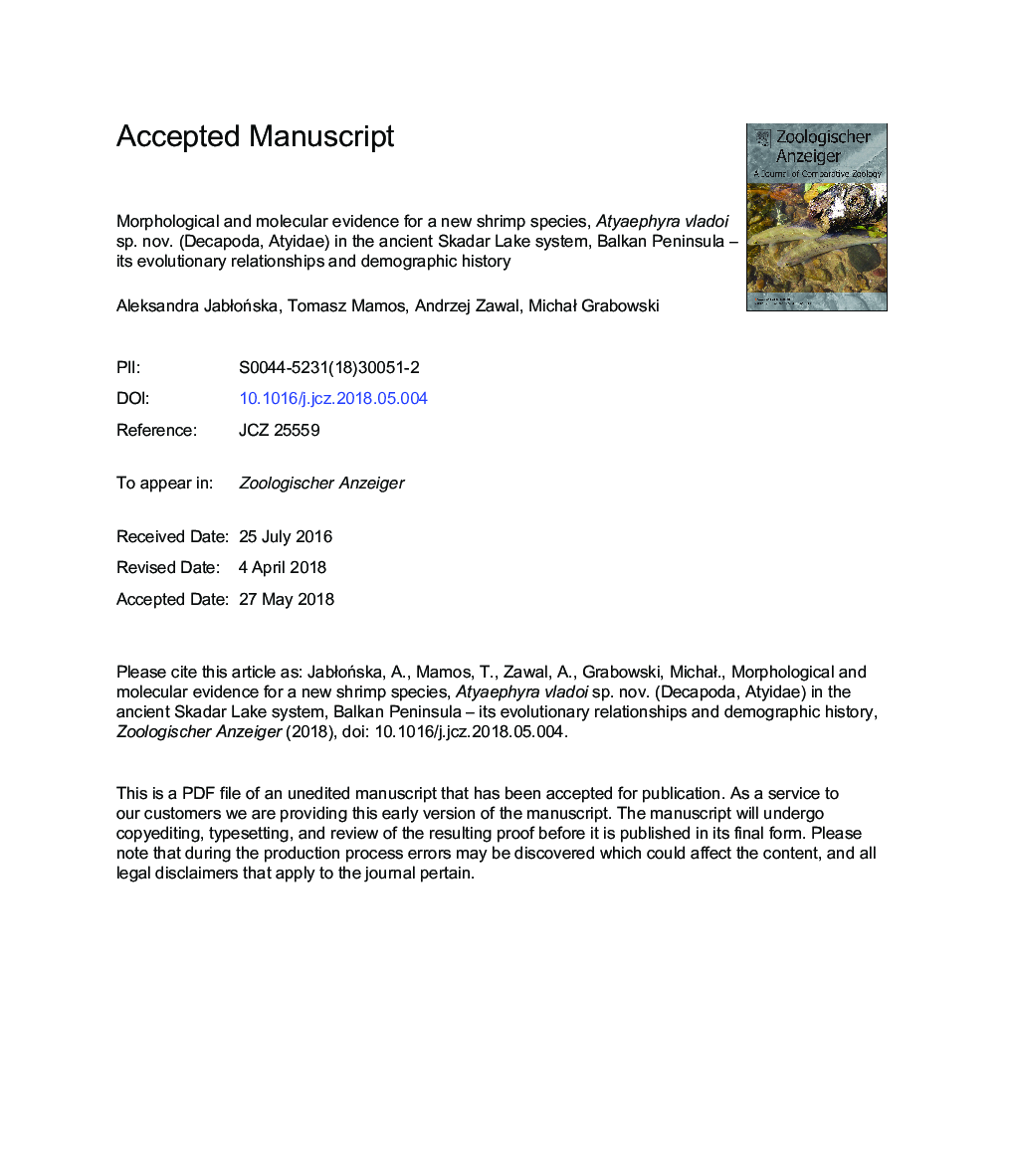| Article ID | Journal | Published Year | Pages | File Type |
|---|---|---|---|---|
| 8626711 | Zoologischer Anzeiger - A Journal of Comparative Zoology | 2018 | 49 Pages |
Abstract
The Balkan Lake Skadar used to be recognized as potentially ancient. Recent studies revealed that, although the present lake is of post-Pleistocene origin, its hydrological system is of at least Pliocene origin. The basin of this lake is characterized by rich biodiversity and high endemism, particularly in the local spring areas. Our study upon freshwater shrimps from the family Atyidae conducted in the Skadar Lake as well as adjacent springs and rivers led to the description of a new species Atyaephyra vladoi, on the basis of morphological features and molecular data. Phylogenetic investigation using mitochondrial COI gene sequences revealed that this new species is most closely related to the south-Balkan A. thyamisensis, from which it diverged in Late Miocene. Population of A. vladoi has expanded both in demographic and spatial terms during the last major interglacial period before the Holocene, i.e. Marine Isotope Stage 5 or Eemian. Combining this evidence with occurrence of A. vladoi mainly in the areas under influence of spring and riverine waters, we can conclude that the species is probably a relic of the old marshlands occupying the basin before the present lake. This supports the supposedly ancient, pre-Holocene, origins of Lake Skadar hydrological system.
Keywords
Related Topics
Life Sciences
Agricultural and Biological Sciences
Animal Science and Zoology
Authors
Aleksandra JabÅoÅska, Tomasz Mamos, Andrzej Zawal, MichaÅ Grabowski,
